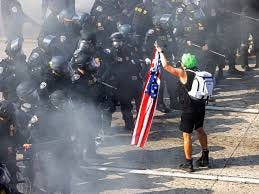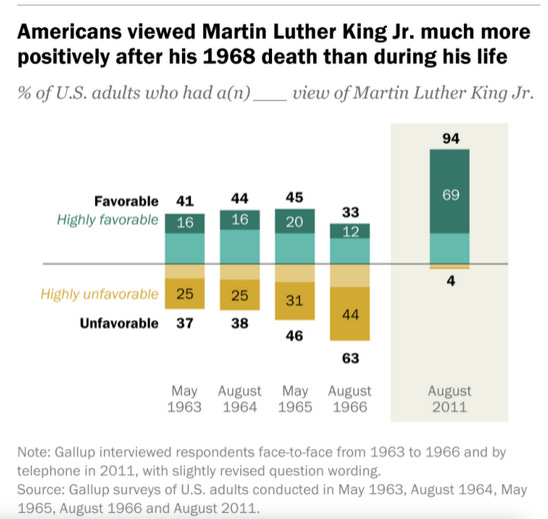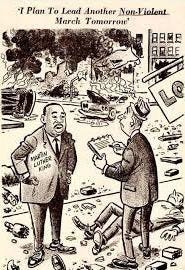"But they were waving Mexican flags"
How trivialities about the optics of protests allow pearl-clutchers to distract from the core issues at play
The protests in Los Angeles have been all over the media, and a recurring image has been youths in Paramount and Compton waving Mexican flags. Apparently, this is controversial for some Americans watching from other parts of the country. This raises a common concern about protests — that of “optics”, and the argument that the most important thing for a protester to consider is how the protest looks and communicates its ideas. Only a protest that expresses itself in a sufficiently conscientious way really deserves to succeed, or is at least if it fails to achieve this goal it must have been caused by these “bad optics”.
Of course, those organizing protests ought to consider optics on practical grounds. Clearly, the way a protest appears to the rest of the country will influence whether or not the protest can achieve its goals. For instance, pro-Palestinian academic Norman Finklestein has often argued that pro-Palestine protests ought not use the slogan “from the river to the sea, Palestine will be free”. Even if this is more or less what he supports, he argues that the message is too easily misconstrued as an antisemitic attack against Jews living in Israel. Pro-palestinian activists must consider the practical effects of using such a slogan, both for their cause and for their own personal reputation. Putting that practical question aside, there’s a legitimate normative question as to whether “optics” are a sensible way to evaluate protests in the first place.
First, spontaneous protests are necessarily diverse. In a protest made up of disciplined, organized militants of a single organization, they might be able to maintain tight message discipline in a strategic way. Spontaneous protests are much different, however (though depending on the type, even more organized protests might bring out a plurivocal crowd). There are always a multitude of voices coming out with their own tempers, grievances, habits, and so on. It’s simply impossible to make sure there isn’t at least one individual that does or says something that many Americans find cringe. Usually, there will be more than one. That is a normal consequence of America’s freedom of assembly. It is absurd to expect all people at a protest to maintain some kind of message discipline, and judge the whole on that expectation.
Second, this stinks of the “cancel culture” which persists not only among progressive people but across the political spectrum. Alleged racism and misogyny can lead to a “cancellation”, as can alleged satanism, Islam and Sikhism, lack of support for the troops, anarchism, socialism, marxism, or criticism of Trump. The moralistic policing of the protester’s speech often functions as a kind of red herring (which is to say, a rhetorical and fallacious distraction) from the core argument. That way, the focus on optics is almost like a psy-op where the whole discourse around protests avoids dealing with the actual grievances at play. In other words, we’re so focused on how they are expressing themselves that we end up forgetting what they mean to express.
Third, Los Angeles was once a part of Mexico. This inevitably shapes the sense of identity held by Mexican Americans in border states like California. Chicanos who resent the fact that America committed a war of aggression against Mexico in the 1840s have a right to voice that irritation, even if other Americans disagree with them. It ought to be expected. Of course, this is specific to the Los Angeles protests, but can be extended to protests in general. Communities that come up to protest always have their own language, norms, symbols, values, and traditions. In a country as diverse as the United States, it should be expected that every community will express themselves in some ways that the mainstream disapproves of.
Fourth, this is a community being actively alienated by the federal government. Their friends and family, members of their community, are being taken away by federal agents. While Trump’s immigration policies may speak for the views of Americans across the country, it does not speak for this particular group of Angelinos. They are being told by Stephen Miller and JD Vance that people like them aren’t real Americans, that the Spanish language (or even indigenous languages) they often prefer are not a part of American heritage, that the undocumented members of their community must be extracted by state violence, and so on. Then we are surprised when this undermines their sense of identity with America? Do “patriots” expect them to effectively grovel by waving the flag that represents a government that holds them in contempt? You might not see things that way — after all, they are as American as Donald Trump — but they may not feel that way due to the context. Lecturing them on how they ought to appear more patriotic to meet our own standards simply reveals our own toxic sensitivity.
Fifth, this fixation on optics is often bad faith. As much as it is a distraction, it is often used to simply avoid needing to argue against the cause of the protests. A person may disagree with the cause of the protest, but failing to find a good argument against it will fall back on piddling stupidities like the flags being waved or the terms being used (“they called a peace officer a pig?”). If not for one issue of optics that drives people up the wall, another one will be identified. Let’s say the Angelinos protesting all brought American flags … now the criticism might be the foul language they hurl at the police, whether their dirt bikes are street legal, whether they should be protesting on the Sabbath, and so on. Moreover, we see the bad faith here because I have never once heard anyone complaining about the Irish flags on March 17.
Sixth and finally, protests are always meant to be edgy. There’s always a few people out there making edgy statements or doing edgy things. In fact, these people serve a useful function for the protesters, as without them most protests are simply ignored. The people with edgy messages and tactics often cause the kind of mess required to call out the media. The image of a middle aged woman with a placard that says “ICE go home” is easy to ignore, but the protest of a lone man waving a Mexican flag before a backdrop of tear gas and LAPD is catchy, and to many folks, even badass. Even the person who finds it offensive cannot ignore it, and this inability for a protest to be easily ignored is in itself a kind of good optics. Even with protests, the old adage about there being no such thing as bad advertising has a core of truth to it.
All that being said, there were plenty of American flags at the protest too. Again, large and spontaneous protests are inherently diverse. We don’t need to agree with how everyone at these events express themselves. Yet we need to clue in to the fact that this obsession with optics is ultimately a moralistic kind of distraction that is set up to fail. I am not saying people cannot argue that optics need to be considered for practical ends. Yet this should be a secondary concern to attacking the hyper-fixation on optics in the first place. So some proud Chicanos wove Mexican flags. Who cares? Why care?
It’s worth making an addendum about protest violence and property damage. It’s often said that the worst optics always come from violence at protests. This is worthy of a longer discussion, but reference is usually made to King and Gandhi who led nonviolent protest movements to achieve social change. Yet it is important to note that neither man was uniformly viewed as nonviolent, even by a majority of people at the time. Even if they were nonviolent, they were still disruptive (and still “violent” in the sense that they often intentionally instigated the violence of white racists). King’s famous criticism of “white moderates” was targeted precisely at those voices who blamed King for being too provocative, even if they claimed to find racism distasteful. These “white moderates” spoke for a majority of white people at the time, who found King far too provocative. As we see in a Pew poll:
Despite King’s militant adherence to nonviolent protest, he was increasingly viewed as a rabble rouser who was wrong to intentionally provoke the racists, oppose the war in Vietnam, and criticize economic inequality. Thus, the “optics” caught up to King too no matter how hard he tried.
This is the curse of anyone seeking social change. No matter how hard one tries, one eventually finds a message people find off-putting, rightly or wrongly. We might quibble about individual cases, like dumping tea in the bay, sitting at segregated lunch counters, shutting down a highway, or waving a Mexican flag. Yet this is always a distraction, and a convenient way for the powers at be to distract us from the actual issues. King knew this well, as he expressed in his argument that the riot is the language of the unheard. Despite criticizing riots and violence (in part on the grounds of optics, though largely due to his Christian morality), King also saw how those who criticized riots were basically hypocrites. They ignore the protests when no riots occur, and when the frustration of protests leads inevitably to more riots, they scold the rioters. Likewise, people protest in a way that gets ignored, and nobody cares, but then they break out the Mexican flags and people are merely offended. In both cases, the ignorance and intransigence of the observer allows for relative trivialities to distract from the real substance of state violence and discrimination.








Good article.
I tend to see protests as counter-productive. Typically they are infiltrated or co-opted by the authorities. Sometimes they are entirely orchestrated by the intelligence community. There are obviously protests which had a positive outcome, but I am always wary to get involved due to the risk of being a pawn in some astroturfed scheme or false flag.
The last I attended were the anti-lockdown protests in Australia (I am Australian)
Concerning these protests in LA, I'd note the following:
1. Federal law clearly permits the arrest and subsequent deportation of people who illegally migrated into the country.
2. The constitution clearly requires that no "State deprive any person of life, liberty, or property, without due process of law". This necessarily applies to all persons, even accused illegal immigrants. If there's even one person who this doesn't apply to, then it doesn't apply to anyone.
3. The states are not required to actively enforce Federal law, but they cannot prevent the Feds from enforcing constitutional Federal laws on their territory.
4. You have a right to wave around whatever flag you want as per the 1st amendment. Even those of designated terrorist organizations, let alone a neighboring nation state.
5. Deploying the national guard is a drastic measure, but deploying the military is completely overboard. This will necessarily pull more regular people into the protests, as it should. The CA National Guard is 24,000 strong, large enough to conquer a territory of 1.2 million people per military estimates. Deploying marines is deliberately provocative.
6. This precedent will absolutely, unequivocally be used by the Democrats when they next get into power. The USA is being ground to dust between the millstones of the GOP and the Democratic party. Wake up to the uniparty or lose your country, it's as simple as that. Resist the media narratives. Resist the propaganda. Talk to your fellow countrymen, even those you disagree with. Establish a healthy media diet, don't just trust cable news or anyone else. Encourage your children to read non-fiction.
Cheers. God bless the United States, and best of luck.
This was absolutely spot on! It’s perfect the way it is but if you ever do decide to expand it images of the Yiddish (and other immigrant) language signs at labor protests and strikes like in the Triangle Shirtwaist fire would prove your point. These immigrants were demonized but we did get the 8 hour day. Would we have gotten a 6 hour day with better optics? 🫢